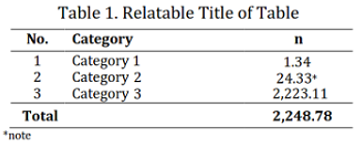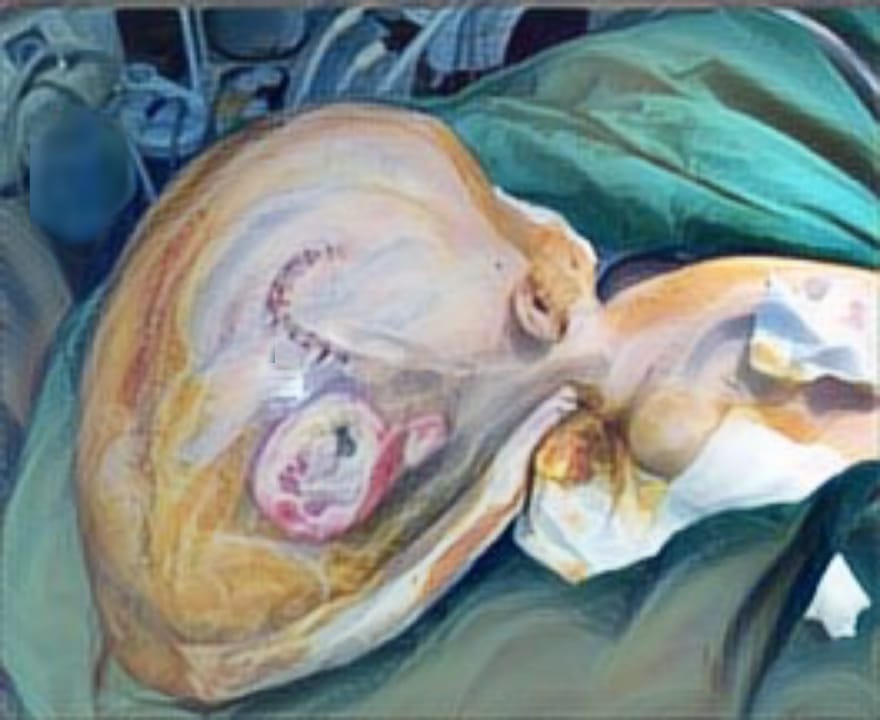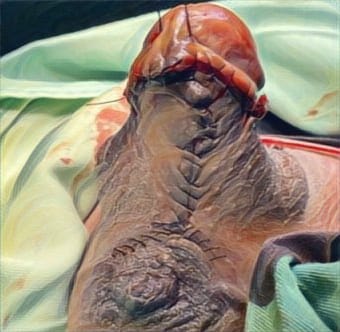Patient Consent for Publication
Jurnal Rekonstruksi dan Estetik (JRE) (p-ISSN:2301-7937, e-ISSN: 2774-6062) is a scientific peer-reviewed medical journal that is relevant to plastic reconstruction, aesthetic surgery, and other health-related professions. Jurnal Rekonstruksi dan Estetik (JRE) is indexed by EBSCO, Google Scholar, GARUDA, WorldCat, CrossRef, BASE, and Dimensions.
Jurnal Rekonstruksi dan Estetik is published twice a year, every June and December by the Faculty of Medicine, Universitas Airlangga, Surabaya, Indonesia. Jurnal Rekonstruksi dan Estetik (JRE) publishes articles in the original article, case report, systematic review, literature review, and meta-analysis with a focus on burn and wound, hand surgery, microsurgery, oncoplastic, craniofacial and external genitalia reconstruction, and aesthetics.
All authors must follow the Guidelines for Authors, Author Declarations, Publication Ethics, and Patient concerns for publication. The manuscript should be written according to our Document Template. The manuscript has not been published elsewhere and is only considered in Jurnal Rekonstruksi dan Estetik (JRE). The statement sheet established by the International Committee of Medical Journal Editors (ICMJE) must be accepted by all authors who contributed to the publication. Authors are requested to have ORCID ID upon submission in Jurnal Rekonstruksi dan Estetik (JRE). You will be guided step-by-step through the creation and upload of your files as the submission process for this publication is entirely online. The manuscript is submitted directly to https://e-journal.unair.ac.id/JRE/about/submissions
The selection of papers for publishing is based on their scientific excellence quality, original research, unique contribution to knowledge, and importance to contemporary plastic reconstruction and aesthetic surgery. After receiving suggestions from peer reviewers, the Editorial Board decides if an article is feasible. It is the author's obligation to revise the manuscript, and any unworkable submissions will be returned to the author. If any manuscript reject, it will be automatically informed by email: jre@journal.unair.ac.id
FORMAT OF MANUSCRIPT TYPE
All manuscripts must be submitted in English. The manuscript is written in Cambria on A4 paper (21x29.7 cm). sized 12, title sized 18, authors' names sized 13, affiliations, abstract, and highlights sized 10, and keywords, corresponding author, history, journal information, and How to cite sized 8. Use single-spaced in two columns. Single variables (e.g., a² + b² = c²; C6H12O6), other symbols (e.g., Δ or β), or mathematical operators (e.g., ≥, x, or ±) are not typed using the equation function. SI units are used. Write using italics (e.g., Rattus norvegicus). The citation should be arranged in accordance with the Vancouver system using Arabic numerals and superscript type (1, 2, 3).
Original Articles
Original Articles should report on original clinical studies or research not previously published or being considered for publication elsewhere. The text should not exceed 3500 words or no more than 30 pages excluding the Abstract and References with an abstract of a maximum of 250 words, a list of a minimum of 25 references. The Original Articles should be obtained ethical approval by Ethical Committee by sending the publication ethics letter. The structure of the Original Articles manuscript submitted to Jurnal Rekonstruksi dan Estetik (JRE) is the manuscript title, authors' name, affiliations, abstract, keywords, highlights, introduction, methods, results, discussion, conclusion, acknowledgment, conflict of interest, funding disclosure, author contribution, and references.
Case Report
Case Report should report on case clinical studies with a minimum of five case studies not previously published or being considered for publication elsewhere. The text should not exceed 3500 words excluding Abstract and References with an abstract of a maximum of 250 words, and a list of a minimum of 15 references. Case Reports should be obtained approval by patients by sending the patient's concern for publication letter. The structure of the Case Report manuscript submitted to Jurnal Rekonstruksi dan Estetik (JRE) is the manuscript title, authors' name, affiliations, abstract, keywords, highlights, introduction, case illustration, discussion, conclusion, acknowledgment, conflict of interest, funding disclosure, author contribution, and references.
Systematic Reviews
Systematic Reviews are thorough evaluations of the evidence from various data sources in connection to a particular topic in the field of plastic reconstruction and aesthetic surgery. The appropriate data sources should be thoroughly searched, and the items gathered should be properly analyzed for inclusion based on previously established inclusion/exclusion criteria. The process should be described and shown analytically via a graphic. The precise characteristics of the patient or study participant groups that were included in the review should be explained, together with the measures of exposure and outcomes with a reference to the relevant data sources. The text must not exceed 3,500 with an abstract of a maximum of 250 words, no more than four tables and/or figures, and a minimum of 30 references. The appropriate methodology should be followed, such as CASP, GRADE CERQual, PRISMA, PRISMA-ScR, and PROSPERO. The structure of the Systematic Reviews manuscript submitted to Jurnal Rekonstruksi dan Estetik (JRE) is the manuscript title, authors' name, affiliations, abstract, keywords, highlights, introduction, methods, results, discussion, conclusion, acknowledgment, conflict of interest, funding disclosure, author contribution, and references.
Literature Review
The same rules for systematic reviews should be followed for literature reviews. They must give thorough explanations and statistical evaluations of the combined estimates of pre-determined outcomes, research heterogeneity and quality, potential publication bias, meta-regression, and subgroup analyses if necessary. Reviews contain points and detailed items based on literature that correlates with the subject covered, which will be discussed in the discussion section. The detail of the subject discussed or the elaboration of the review, not repeating the review, how the review of the reported literature can solve the problem, as well as differences and similarities with previous studies. The authors are requested to submit PRISMA flow diagrams, depending on the type of investigation.
Meta-analyses
The same guidelines that apply to systematic reviews also apply to meta-analyses. They must give explanations and statistical evaluations of the combined estimates of pre-determined outcomes, research heterogeneity and quality, potential publication bias, meta-regression, and subgroup analyses if necessary. Depending on the type of study, the authors are invited to submit PRISMA flow diagrams or MOOSE checklists. In terms of the editorial process, both systematic reviews and meta-analyses will be treated similarly to original publications.
MANUSCRIPT STRUCTURE DESCRIPTION
The following information must be included:
Manuscript title
The title should be specific, concise, and comprehensible. It should be written in English in UPPERCASE and contain a maximum of 20 words. (not exceeding 80 letters and spaces) according to the Enhanced Spelling and left alignment.
Full authors' names
The manuscript has a main author and co-authors. Academic ranks or titles should not be used in an author's name. The ORCID ID of at least one author must be added. The link ought to be included on the ORCID ID logo after the authors' names.
Corresponding author
Indicate the corresponding author clearly with an asterisk symbol (*) after the corresponding author's name. A corresponding author is a person who is in charge of managing correspondence with the Editorial Board during the whole pre- and post-publication of the manuscript process.
Authors' affiliation(s)
The affiliations are listed sequentially using an alphabet (a,b,c) and the name of the department(s) to which the authors are affiliated (including the city and the country).
Example:

Abstract
The manuscript should contain a structured abstract that is self-contained and citation-free. The abstract comes after the title and authorship information in the manuscript. It should be written in English of no more than 250 words. It consists of an introduction, methods, results, and conclusion, while introduction, case illustration, discussion, and conclusion for Case Report.
Keywords
The keywords consist of 3-5 words in English, starting with a capital letter (Sentence case) without an ending point, and must contain at least one keyword of Sustainable Development Goals (SDGs).
Correspondent Author
The correspondent author contains the details of the author data in charge with the detailed address and e-mail (consisting of full name, affiliation, address, telephone number, and email address).
Highlights
Highlights of the manuscript should not be copy-pasted from other parts of the text and consist of a minimum of two significant points that represent the study's original contributions.
Introduction
State the rationale for the study, a brief description of the background consisting of background issues, problem formulation, research objectives, and benefits. Establish a gap in the current knowledge, state the novelties, and convince the readers that the gap. The results and conclusions should not be included.
Methods
Methods contain clear descriptions of the tools and materials used and research schemes and methods useful for other researchers to replicate and check validity if necessary. Reference should be given to the method used. Studies that use animal or human subjects should include evidence of applicable ethical research.
Case Illustration
Contains a clear and detailed description of the case(s) presented, including: anamnesis and clinical examinations. The specific system of tooth nomenclature: Zygmondy, World Health Organization or Universal must be clearly stated. The operation technique is presented accurately and concisely in chronological order supported with figures and a detailed description of the research methodology employed.
Results
Results should be presented accurately and concisely in a logical order with the number of tables and illustrations needed to summarize the important results of the study. Tables must be horizontal (without vertical line separation). The mathematical equation must be written clearly. If the mathematical symbol is not available on the computer, the symbol can be handwritten with a pencil. Tables, illustrations, and photographs should be quoted in the text in sequence and separated from the text. The title and detailed description of the illustrations (drawings, graphs) are written in the legend for illustration, not in the illustration. All non-standard abbreviations used should be described in the footnotes.
Figures
Cite figures in ascending Arabic numerals according to the first appearance in the manuscript file. The original format must be in JPEG and not be smaller than 300 dpi. Figures require a label with Arabic numerals in order (e.g., "Figure 1”, "Figure 2”, and so on) and a brief descriptive title to be placed below the figure, center-aligned. Do not submit your figures in separate files.
Tables
Cite tables in ascending Arabic numerals according to the first appearance in the manuscript. Tables require a label with Arabic numerals in order (e.g., "Table 1”, "Table 2”, and so on) and a brief descriptive title to be placed above the table. Do not submit your tables in separate files.
Example:

Discussion
The discussion explains the meaning of the results of the study, does not repeat the results, how the reported results can solve the problems, the differences and similarities with the studies that have been done before, and the possibility of developing the study. This section should include the possibilities for developing further studies, strengths, and limitations of the study. Ensuring that the discussion corresponds to the results should often commence with a brief summary of the main scientific findings (not experimental results). The following components should be covered in the discussion:
Conclusion
The conclusion is the answer to the question formulation that is asked at the end of the introduction. The conclusions should be based on the results and discussions described earlier. Add suggestions or feedback for further research.
Acknowledgments
Acknowledgments for all research contributors, if any, should be stated briefly on the manuscript before reference.
Conflict of Interest
All submissions to Jurnal Rekonstruksi dan Estetik (JRE) must include a conflict of the interest disclosure statement or a statement from the authors stating that they have no conflicts to disclose.
Funding disclosure
The authors should state how the research was funded in this section, including grant numbers if applicable.
Authors' contributions
All of the authors have contributed to the planning, data collection and analysis, writing, and approval of this paper for the publishing stages of the research.
References
References should be arranged in accordance with the Vancouver system. Journal managers advise authors to use Mendeley-specific app or other reference apps (for example: Endnote, Zotero, RefWorks). References should be numbered consecutively in the order in which the citation is first mentioned in the text, written with superscript, and placed at the end of the text in numerical rather than in alphabetical order. Reference must be valid, 80% comes from publications in the last 10 years and contains at least 40% of primary references (from journals, theses, dissertations, and patent documents). Unpublished sources, such as a preparatory or personal communication script, can not be accepted as a reference. Only the sources cited in the text appear in the reference list. The author's name should be written consistently. The number and volume of a journal should be included. Editions, publishers, cities, and page numbers of textbooks should be included. Referrals downloaded from the internet, including access times and web addresses, should also be included. Abbreviations of journal names should be written in full.
Reference to a journal publication:
Reference to a book:
Reference to a website:
Reference in a proceeding:
Bachelor thesis, master thesis, or dissertation:
Patent:
SUBMISSION PREPARATION CHECKLIST
As part of the submission process, authors are required to check off their submission's compliance with all of the following items, and submissions may be returned to authors that do not adhere to these guidelines.
Copyright Notice
The Jurnal Rekonstruksi dan Estetik, published by the Faculty of Medicine, Universitas Airlangga, Surabaya, Indonesia, is licensed under a Creative Commons Attribution-ShareAlike 4.0 International License. Additional permissions beyond this license may be available at https://e-journal.unair.ac.id/JRE. By submitting articles or article manuscripts, authors agree to adhere to this policy.
1. The journal distributes articles with the aim of maximizing accessibility. Under the Creative Commons license, users are permitted to copy, distribute, display, and perform the work, provided they attribute the authors and the journal. This applies to both the journal itself and other media of publication.
2. Authors guarantee the originality of their articles, asserting that they are written by the stated authors, have not been previously published, contain no unlawful statements, do not infringe upon the rights of others, are subject to copyright exclusively held by the authors, and have obtained any necessary written permissions to quote from other sources.
3. Authors retain all rights to their published works, including copyright and other proprietary rights, allowing them to use the substance of the article in their future works, reproduce the article for their own purposes, and enter into additional contractual arrangements for the non-exclusive distribution of the published version.
4. In cases of co-authorship, any author submitting the manuscript warrants that they have been authorized by all co-authors to agree to the copyright and license notice on their behalf, and they agree to inform their co-authors of the terms of this policy.
The journal will not be responsible for any issues arising from internal disputes among authors and will only communicate with the corresponding author.
Journal History Focus and Scope Section Policies Publication EthicsArticle Processing Charge Peer Review Process Publication Frequency Open Access Statement Archiving Plagiarism Screening Repository Policy License Term ORCID ID Policy Copyright Notice Reference Manager Journal Sponsorship Withdrawal and Retraction Policy Complaint ProceduresOld Website Journal Contact







 Jurnal Rekonstruksi dan Estetik by Unair is licensed under a Creative Commons Attribution-ShareAlike 4.0 International License.
Jurnal Rekonstruksi dan Estetik by Unair is licensed under a Creative Commons Attribution-ShareAlike 4.0 International License.
